Earthshine, Comet Pons-Brooks, Quasar B3 0754+394
Posted: 12 March 2024
Monday, 11 March 2024, had alternating cloudy and clear skies. As sunset approached, the sky was mostly clear so I decided to open the observatory and at least try to get an image of Comet 12P/Pons-Brooks, unless clouds along the western horizon interferred.
|
Open: Monday, 11 March 2024, 1818 MST Temperature: 77°F |
Session: 1948 Conditions: Mostly clear |
Equipment:
12" f/8 LX600 w/StarLock
2" 24mm UWA eyepiece
Focal reducer
12x50 binoculars
Camera:
D850 DSLR
iPhone 15 Pro Max
1823 MST: LX600 ON, StarLock OFF, High Precision OFF.
1827 MST: Viewed the thin crescent Moon, 102X.
Prepared the D850 DSLR for imaging and mounted it at prime focus + focal reducer.
1830 MST: Sunset. Time approximate due to clouds along the western horizon.
1848 MST: The Moon, prime focus + focal reducer, 1/160sec, ISO 400, White Balance Auto.
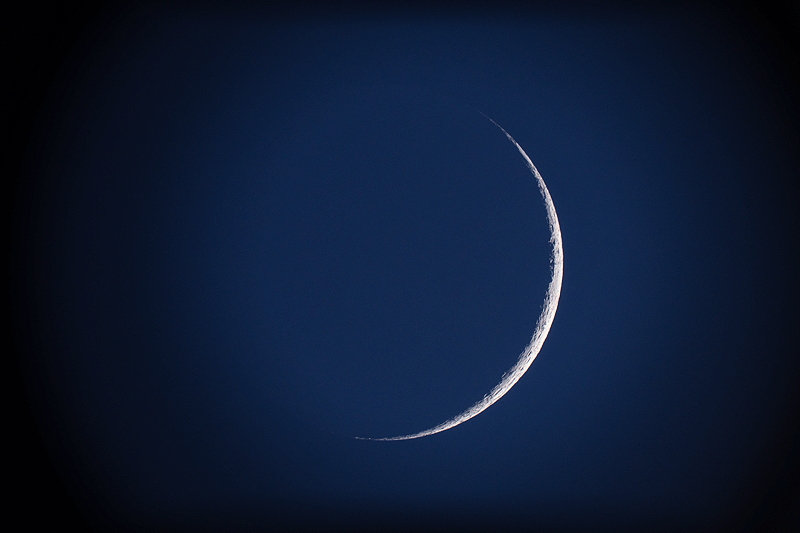
1900 MST: Earthshine, prime focus + focal reducer, 1/8sec, ISO 400, White Balance Auto.
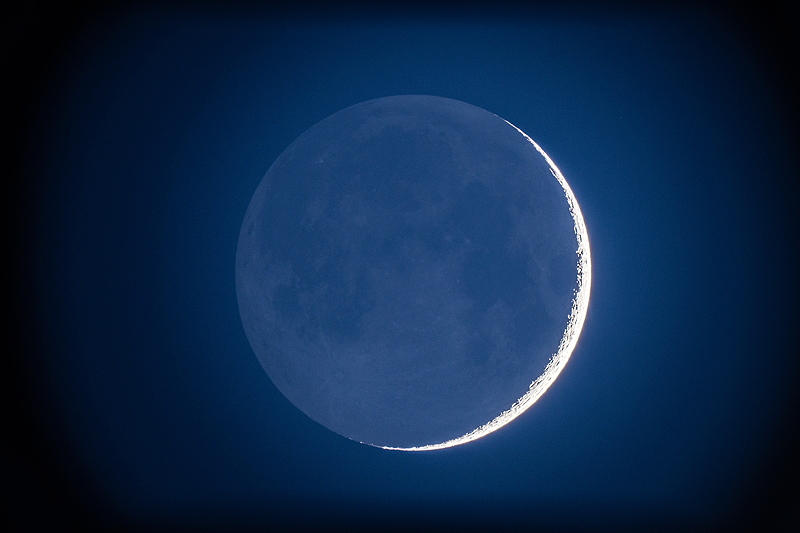
1910 MST: The crescent Moon with Earthshine, taken with the iPhone 15 Pro Max using the Camera app (Night Mode, 3 seconds, 5X lens).
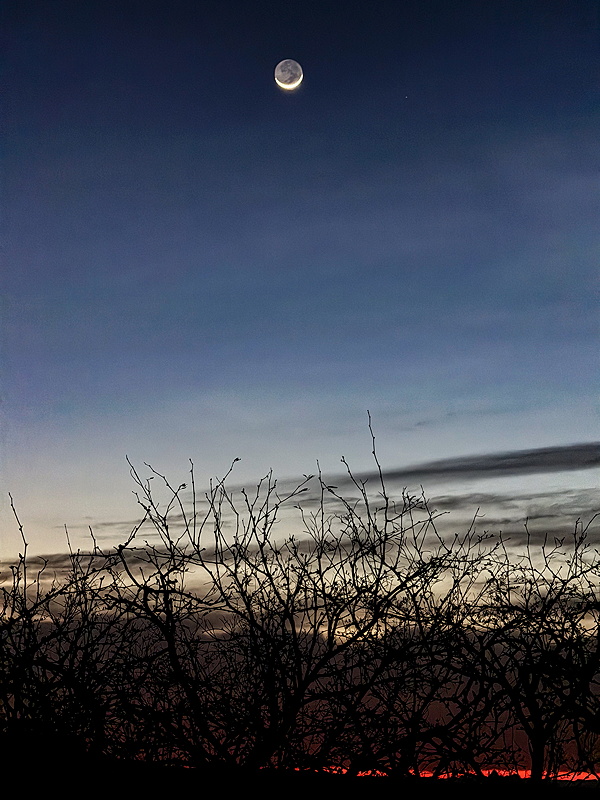
Viewed the Moon and Earthshine, 102X.
1913 MST: Wi-Fi ON.
Used SkySafari 7 Pro on the iPhone to GOTO Comet 12P/Pons-Brooks. The comet with a nice coma was visible in the twilight sky, 102X. No tail was visible.
Mounted the D850 DSLR at prime focus + focal reducer, focused on the star Shedir, locked the primary mirror, and slewed back to the Comet using the iPhone.
1928 MST: StarLock ON.
1934 MST: Comet 12P/Pons-Brooks, StarLock autoguided, 30 seconds, ISO 3200, White Balance 4550K.
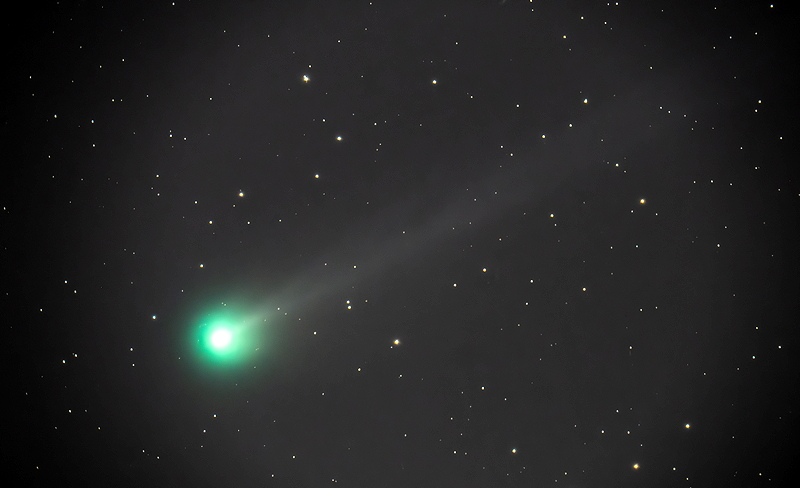
1938 MST: Wi-Fi OFF.
Viewed the comet, 12x50 binoculars. Coma easily seen. No tail visible in the binoculars. The comet was not visible to the naked eye in the twilight sky.
Slewed to Quasar B3 0754+394 to check its position.
1949 MST: Dome OFF (onto the PZT).
Focused on the star Procyon, locked the mirror, and SYNCed on Procyon. I then slewed to Quasar B3 0754+394, Mag. +14.3, 1.27 Billion Lightyears distant. Took this StarLock autoguided image (5 minutes, ISO 6400). A satellite is at the lower right.
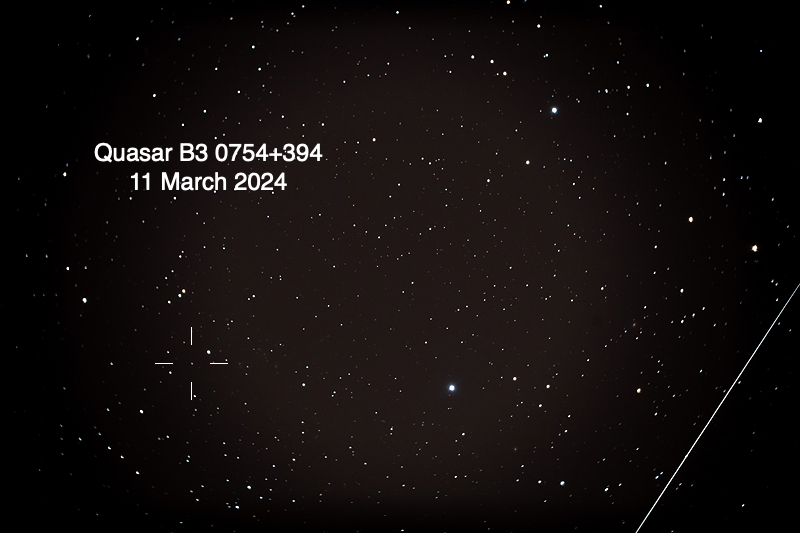
2005 MST: StarLock OFF.
2020 MST: Dome ON.
I resumed observing (or attempting to observe) some dark nebulae Barnard Objects, 102X: B2, B3, B4, B5, B6, B8, B9, B7, and B10.
Viewed the Crab Nebula (M1) and then the Orion Nebula (M42), 102X.
2040 MST: LX600 OFF.
2047 MST: Took a Sky Quality reading.
|
Close: Monday, 11 March 2024, 2050 MST Temperature: 54°F |
Session Length: 2h 32m Conditions: Partly cloudy, SQM 20.88 |
Comments are welcome using Email. Please read the Email Etiquette guidance.
Cassiopeia Observatory Home Page
Copyright ©2024 Michael L. Weasner / mweasner@mac.com.
URL = http://www.weasner.com/co/Reports/2024/03/12/index.html
